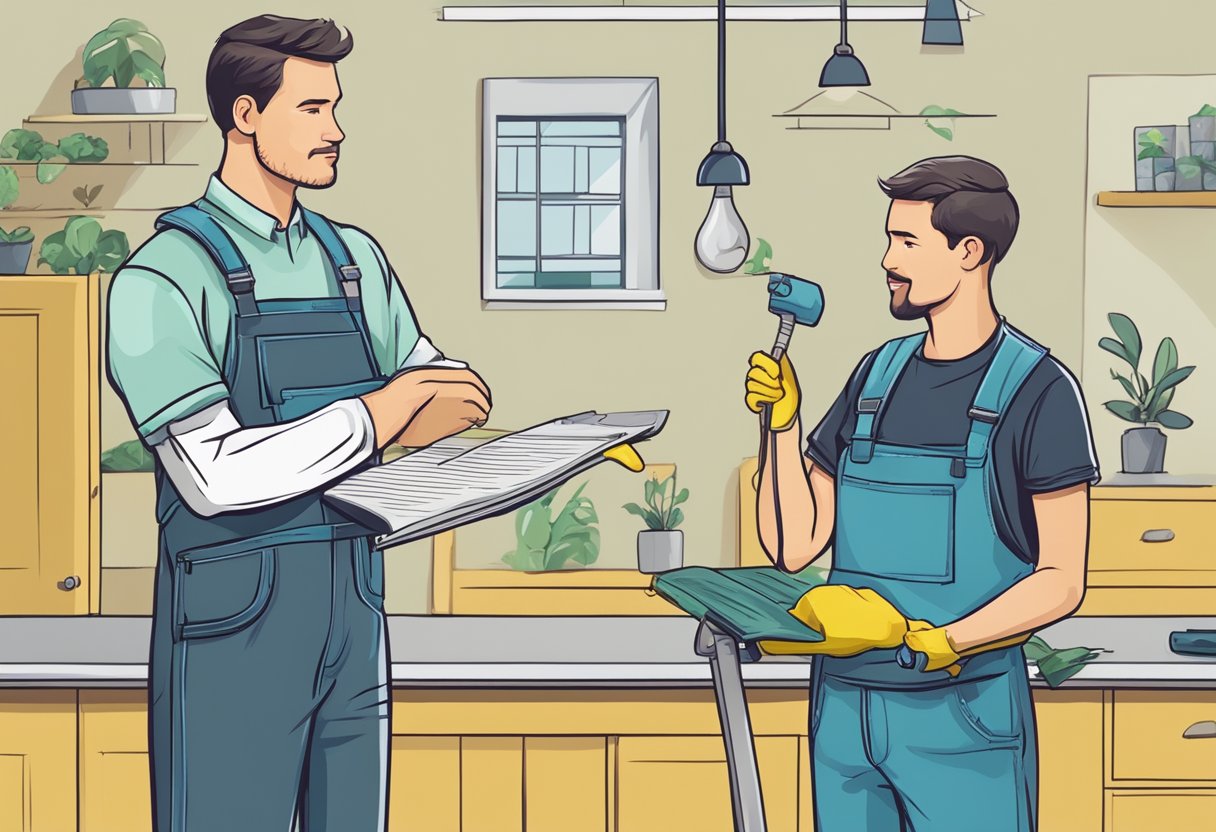Repairing appliances instead of replacing them is a simple yet powerful step towards reducing electronic waste, conserving resources, and mitigating climate change. By embracing repair culture, individuals can contribute to a more sustainable future for our planet while enjoying the economic and environmental benefits of extended product lifetimes. Repairing equipment instead of replacing it can offer several carbon footprint benefits, including reducing the amount of waste that ends up in landfills, reducing the energy required to manufacture new products, and reducing the amount of greenhouse gases emitted during the production process.

In addition to the environmental benefits, repairing appliances can also save individuals money in the long run. Repairing a broken appliance is often much cheaper than replacing it with a new one, especially if the appliance is still relatively new. Repairing appliances can also extend their lifespan, which means that individuals can get more use out of them before needing to replace them. This can be especially helpful for individuals who are on a tight budget or who are looking to reduce their overall expenses.
Overall, repairing appliances instead of replacing them is a simple yet effective way to reduce electronic waste, conserve resources, and mitigate climate change. By embracing repair culture, individuals can contribute to a more sustainable future for our planet while enjoying the economic and environmental benefits of extended product lifetimes.
Understanding Repair and Its Environmental Impact
https://www.youtube.com/watch?v=T82eqBglwJ8&embed=true
Repairing household appliances and electronics can have a significant positive impact on the environment. By opting to repair instead of replacing, individuals can reduce the amount of waste that ends up in landfills and lower their carbon footprint.
One of the most significant environmental benefits of repair is reducing the amount of electronic waste that is generated. When appliances and electronics are thrown away, they often end up in landfills where they can release harmful chemicals and greenhouse gases as they decompose. By repairing these items instead, individuals can extend their lifespan and reduce the amount of waste that is produced.
Repairing appliances and electronics can also be a more sustainable option. Choosing to repair instead of replacing can help to conserve natural resources and reduce the demand for new products. Additionally, many repair services now offer eco-friendly options, such as the responsible disposal of old parts and the use of energy-efficient solutions.
Furthermore, the right to repair movement is gaining momentum, which can further benefit the environment. By allowing consumers to repair their own devices or choose repair services, manufacturers can reduce the amount of waste that ends up in landfills and lower their carbon footprint.
Overall, repairing household appliances and electronics can have a significant positive impact on the environment. By reducing the amount of waste that is generated and conserving natural resources, individuals can help to create a more sustainable future.
The Carbon Footprint of Manufacturing vs Repairing
https://www.youtube.com/watch?v=yhlg9txl7yM&embed=true
Manufacturing new products requires a significant amount of energy and resources, which results in higher greenhouse gas emissions and a larger carbon footprint compared to repairing existing products. According to a report by the US Department of Energy, the manufacturing sector is responsible for approximately 22% of total energy use and 25% of greenhouse gas emissions in the United States.
On the other hand, repairing products can significantly reduce the carbon footprint of the consumer goods industry. Repairing products can extend their lifespan, reducing the need for new products to be manufactured. This results in lower energy use and greenhouse gas emissions associated with the production and transportation of new products.
In addition, repairing products can also reduce the amount of waste generated by the consumer goods industry. By repairing products instead of throwing them away, consumers can reduce the amount of waste that ends up in landfills, which can take hundreds of years to decompose and release harmful greenhouse gases.
Furthermore, repairing products can also create jobs in the repair and maintenance industry. This can help to support local economies and provide employment opportunities for individuals with specialized skills in repairing and maintaining products.
Overall, repairing products can significantly reduce the carbon footprint and environmental impact of the consumer goods industry. By extending the lifespan of products and reducing waste, repairing can help to conserve energy and resources, reduce greenhouse gas emissions, and support local economies.
Conserving Resources through Repair
https://www.youtube.com/watch?v=mxXJGycf_YE&embed=true
Repairing appliances instead of replacing them can have a significant impact on the environment by conserving resources. Manufacturing new appliances requires a considerable amount of raw materials such as metals, plastics, and rare minerals. By repairing and prolonging the lifespan of appliances, the demand for new products is reduced, and subsequently, the need for raw materials is also lowered.
Repairing appliances can also help in the conservation of energy. The production of new appliances requires a considerable amount of energy, from the extraction of raw materials to the manufacturing process and transportation. Repairing an existing appliance requires less energy and raw materials, contributing to a greener environment.
In addition to conserving resources and energy, repairing appliances can also help reduce waste. By extending the lifespan of appliances, the need for disposal and subsequent waste generation is lowered. This, in turn, helps reduce the environmental impact of landfills, where electronic waste can release harmful chemicals into the environment.
Overall, repairing appliances instead of replacing them is a simple yet effective way to conserve resources, energy, and reduce waste. It can promote a more sustainable and environmentally friendly lifestyle, without compromising on the quality of life.
Waste Reduction and Landfill Impact
https://www.youtube.com/watch?v=Qyu-fZ8BOnI&embed=true
Repairing items rather than replacing them can have a significant impact on reducing waste and limiting the amount of waste sent to landfills. When items are repaired, they can continue to be used, which extends their lifespan and reduces the need to produce new items. This, in turn, conserves natural resources such as timber, water, and minerals. According to the Recycling Economic Information (REI) report by the U.S. Environmental Protection Agency, recycling and reuse activities in the United States accounted for 757,000 jobs, $36.6 billion in wages, and $6.7 billion in tax revenues in 2019.
Landfills are a major issue when it comes to waste management. The decomposition of waste in landfills produces methane, a potent greenhouse gas that contributes to climate change. Additionally, landfills take up valuable land space and can contaminate soil and groundwater. Repairing items instead of replacing them can help reduce the amount of waste that ends up in landfills. According to Conserve Energy Future, “Studies have shown that people living near or prolonged exposure to landfills have been linked to cancer, respiratory disorders, and developmental defects in children.”
Reducing waste through repair can also have economic benefits. The Solid Waste Act of 1990 set a goal of diverting 25% of New Mexico’s municipal solid waste from landfills by 1995 and 50% by July 1, 2000. The act recognized that the benefits of recycling come not only from selling recycled materials and conserving resources but also from reducing expenses or from “avoided costs.” Repairing items can help individuals and businesses save money by avoiding the cost of purchasing new items and disposing of old ones.
In conclusion, repairing items rather than replacing them can have a significant impact on reducing waste and limiting the amount of waste sent to landfills. Repairing items can extend their lifespan, conserve natural resources, reduce greenhouse gas emissions, and save individuals and businesses money.
The Role of Repairing in Energy Conservation
https://www.youtube.com/watch?v=66UN2Nw2t28&embed=true
Repairing appliances instead of replacing them can play a significant role in energy conservation. When an appliance breaks down, many people assume that buying a new one is the best option. However, this is not always the case. Repairing an appliance often requires fewer resources and less energy, especially when compared to the energy-intensive processes of creating a new one.
Choosing repair over replacement can contribute to lower greenhouse gas emissions and a reduced carbon footprint. This is because manufacturing new appliances requires a significant amount of energy and resources, which contributes to environmental degradation. Repairing appliances can help reduce the demand for new products, which in turn can help reduce the amount of energy and resources needed to produce them.
In addition to reducing the environmental impact of manufacturing new appliances, repairing appliances can also help reduce energy consumption. When an appliance breaks down, it may not be using energy as efficiently as it should be. Repairing the appliance can help restore its energy efficiency, which can result in lower utility bills over time.
Moreover, repairing appliances can help extend their lifespan. This can help reduce the amount of waste that ends up in landfills, which can help reduce the environmental impact of waste disposal. By choosing repair over replacement, people can help reduce the amount of energy and resources needed to produce new appliances, conserve energy, and reduce waste.
Overall, repairing appliances instead of replacing them can play a significant role in energy conservation. By choosing repair over replacement, people can help reduce the environmental impact of manufacturing new appliances, conserve energy, and reduce waste.
Economic and Practical Benefits of Repairing
https://www.youtube.com/watch?v=HtfVL1zQah8&embed=true
Repairing appliances instead of replacing them can have significant economic and practical benefits. While replacing an appliance may seem like the easier option, it can often be much more expensive than repairing it. Repairing an appliance can be a cost-effective solution that saves money in the long run.
Repair costs can vary depending on the type of appliance and the extent of the damage. However, in many cases, repairing an appliance is much more cost-effective than replacing it. For example, replacing a refrigerator can cost anywhere from $500 to $2,500, while repairing it can cost as little as $200. Similarly, replacing a washing machine can cost between $400 and $1,500, while repairing it can cost as little as $100.
In addition to being cost-effective, repairing appliances can also be more wallet-friendly. By repairing an appliance, consumers can avoid the high costs of purchasing a new one. This can be especially beneficial for those on a tight budget or those looking to save money.
Furthermore, repairing appliances can be a practical solution for those who are environmentally conscious. By repairing appliances instead of replacing them, consumers can reduce the amount of waste that goes into landfills. This can help to protect the environment and preserve natural resources.
In conclusion, repairing appliances can be a cost-effective and practical solution that saves money in the long run. It can also be an environmentally friendly option that helps to reduce waste and preserve natural resources.
Repairing and the Circular Economy
https://www.youtube.com/watch?v=hL5oxz_CuPY&embed=true
The concept of a circular economy has gained traction in recent years as a more sustainable alternative to the traditional linear economy. The linear economy is based on the “take, make, dispose” model, where resources are extracted, processed, and turned into products that are used and then discarded as waste. In contrast, a circular economy aims to keep resources in use for as long as possible, through strategies such as repairing, recycling, and repurposing.
Repairing is a key component of the circular economy, as it helps to extend the lifespan of products and reduce the need for new ones. Repairing products can also help to reduce waste and conserve resources, as it avoids the need to extract new raw materials and manufacture new products. According to a study by the Ellen MacArthur Foundation, repairing and refurbishing products could save up to 20% of global materials use by 2050.
In addition to the environmental benefits, repairing also has economic benefits. Repairing products can create jobs in the repair and maintenance industry, which can be particularly beneficial for local economies. A study by the European Commission found that the repair and reuse sector could create up to 200,000 jobs in the EU by 2030.
Furthermore, repairing can also help to reduce the cost of ownership for consumers. Repairing products can often be cheaper than buying new ones, particularly for high-value items such as electronics and appliances. Repairing can also help to extend the lifespan of products, which can save consumers money in the long run by reducing the need for frequent replacements.
Overall, repairing is an important strategy for achieving a circular economy. By extending the lifespan of products and reducing the need for new ones, repairing can help to conserve resources, reduce waste, and create economic opportunities.
The Importance of Design and Lifespan in Repairing
https://www.youtube.com/watch?v=bUJDD4uDVl4&embed=true
Design and lifespan are two important factors that play a critical role in the repairability of a product. When a product is designed with repair in mind, it is easier to disassemble, diagnose, and fix. This means that the product can be repaired rather than replaced, which has numerous environmental benefits.
Products that are designed to last longer are also more environmentally friendly. When a product has a longer lifespan, it reduces the need for frequent replacements, which in turn reduces the amount of waste generated. This is because the manufacturing and disposal of products contribute significantly to environmental degradation.
Moreover, products that are designed to be repairable and have a longer lifespan are often more cost-effective in the long run. This is because repairing a product is usually cheaper than replacing it. When a product is designed with repair in mind, it is easier and cheaper to fix, which means that the owner can save money in the long run.
Furthermore, designing products with repair in mind also creates job opportunities for repair technicians. When products are designed to be repairable, it creates a market for repair services, which in turn creates jobs. This is particularly important in today’s economy, where job creation is crucial.
In conclusion, designing products with repair in mind and ensuring a longer lifespan for products is crucial for environmental sustainability. It reduces waste, saves money, and creates job opportunities. Therefore, it is important for manufacturers to prioritize repairability and longevity in their product design.
Conclusion: The Future of Repairing

In conclusion, repairing appliances and products instead of replacing them can have a significant positive impact on the environment. Repairing items can help reduce waste, conserve resources, and mitigate environmental impacts. Additionally, repairing appliances instead of replacing them can save consumers money, promoting financial well-being and affordability.
The future of repairing is looking bright, with more and more people recognizing the importance of repairing over replacing. The right-to-repair movement has gained momentum, with consumers and activists pushing for legislation that requires manufacturers to make their products repairable. This movement has the potential to significantly reduce electronic waste and promote sustainable consumption.
Furthermore, repairing products can also provide economic benefits. Repairing products can create jobs in the repair industry, contributing to both social and environmental benefits. Repairing items can also be more cost-effective than replacing them, particularly for high-end products.
Overall, repairing products instead of replacing them is a sustainable and environmentally friendly option that should be considered whenever possible. As consumers become more aware of the benefits of repairing, we can expect to see a shift towards more sustainable consumption habits in the future.
Frequently Asked Questions

What are the environmental benefits of repairing instead of replacing?
Repairing products instead of replacing them helps to reduce waste and conserve natural resources. It also helps to reduce the amount of energy used in the production of new products. By repairing products, consumers can extend the life of their products and reduce the amount of waste that ends up in landfills.
How does repairing products contribute to reducing environmental impact?
Repairing products can help to reduce the amount of waste that ends up in landfills. This, in turn, can help to reduce the amount of greenhouse gases that are released into the atmosphere. Repairing products also helps to conserve natural resources by reducing the amount of raw materials that are needed to produce new products.
Can repairing and recycling have a positive impact on the environment?
Yes, repairing and recycling can have a positive impact on the environment. By repairing and recycling products, consumers can reduce the amount of waste that ends up in landfills. This, in turn, can help to reduce the amount of greenhouse gases that are released into the atmosphere. Recycling also helps to conserve natural resources by reducing the amount of raw materials that are needed to produce new products.
What are some ways that repairing can help reduce waste?
Repairing products can help to reduce waste in several ways. First, repairing products can extend the life of the product, which reduces the need to replace the product and creates less waste. Second, repairing products can help to reduce the amount of waste that ends up in landfills. Finally, repairing products can help to reduce the amount of energy that is used in the production of new products.
Does repairing products help to conserve natural resources?
Yes, repairing products helps to conserve natural resources. By repairing products, consumers can extend the life of their products, which reduces the need to produce new products. This, in turn, reduces the amount of raw materials that are needed to produce new products.
How does repairing contribute to a more sustainable future?
Repairing products contributes to a more sustainable future by reducing waste and conserving natural resources. By repairing products, consumers can extend the life of their products, which reduces the need to produce new products. This, in turn, reduces the amount of raw materials that are needed to produce new products. This helps to create a more sustainable future by reducing the amount of waste that ends up in landfills and conserving natural resources.

